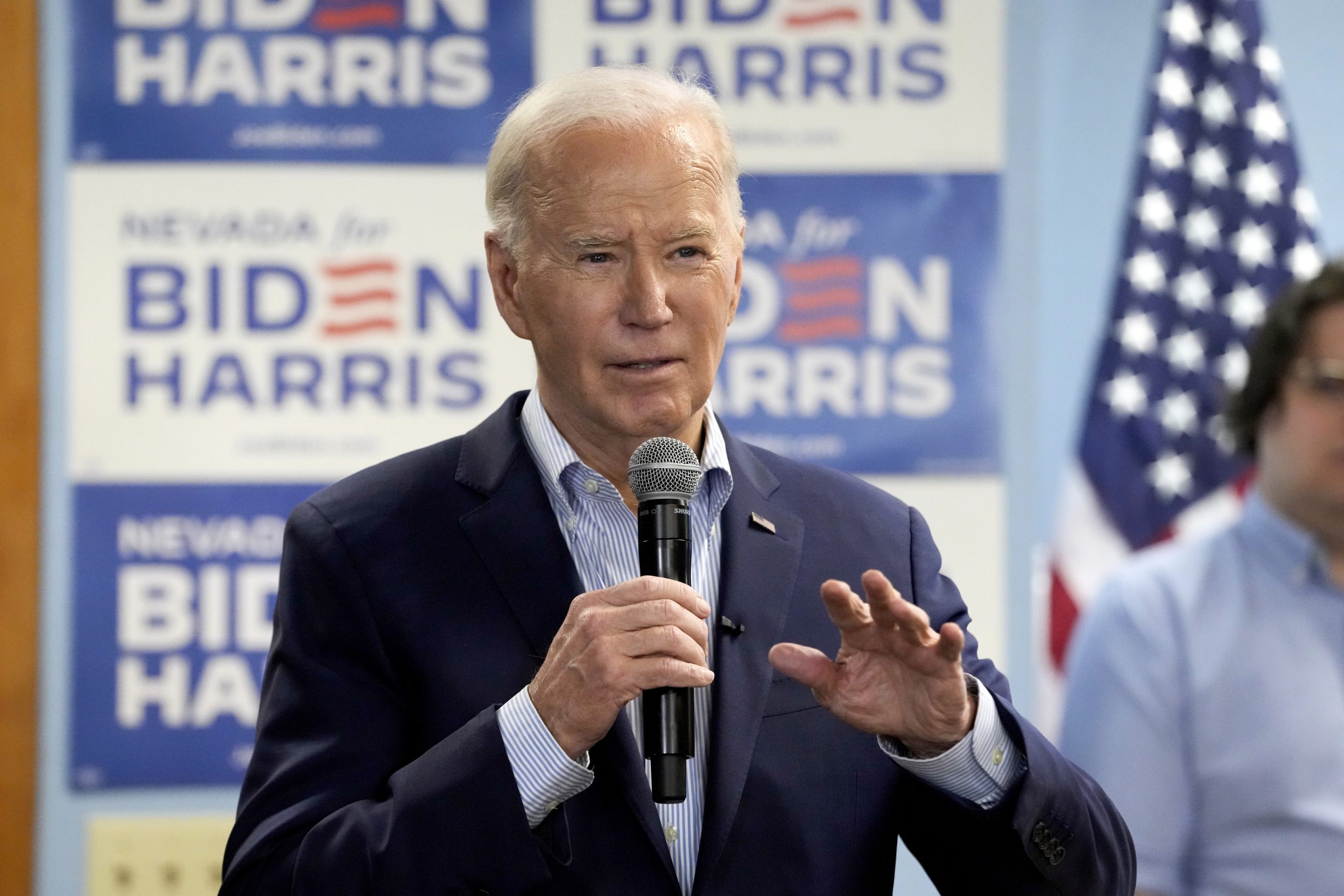
n recent months, polling has generally showed President Joe Biden running behind his Republican challenger, Donald Trump, by a small margin, particularly in swing states like Georgia and Arizona. But election polling began to fluctuate after Biden’s State of the Union speech last month.
The question is how much meaning observers should ascribe to polls in April, seven months ahead of the election.“We’re pretty well beyond the point where it starts becoming meaningful,” said Dave Wasserman, editor at the election-analysis newsletter the Cook Political Report. “We’re seeing a lot of variation in polls, which is not new.”
Most political partisans have long made up their minds about their preferred candidate. But large numbers of voters aren’t really paying attention to the election campaigns yet.
“The polling has a lot of noise because of polarization,” said Rachel Bitecofer, a political scientist, campaign strategist and author of Hit ’Em Where It Hurts. “The polling is measuring latent partisanship. … But, you know, at the end of the day, it is going to be a 50-50 race coming into election day. I don’t know why folks are having a hard time accepting that.”
The discipline of political polling comes under perennial challenge every election cycle, occasionally metastasizing into cancerous error like “unskewed polls”. Pollsters try to focus on building a demographic model of the electorate that’s accurate, to weight the results of a poll correctly. If a pollster under- or overestimates the proportion of, say, Latino voters or college-educated voters or young voters on election day, a poll will reflect that error.
But pollsters also treat their formulae for weighting polls like a trade secret akin to the recipe for Coca-Cola, said Louis Perron, a political strategist and author of Beat the Incumbent: Proven Strategies and Tactics to Win Elections. That lack of transparency contributes to polling error, he said.
“Polls have been considerably off for many cycles. Now, after every election cycle, pollsters claim to have learned their lesson, just to be wrong again,” Perron said.
“Now, in their defense, primary polling seems to be OK. Let’s wait for the general election. I mean, Trump has been seriously underestimated in many polls, as have Trump voters. So, maybe the simple reason why he’s now ahead is because he’s no longer underestimated. Maybe they have adapted the polling, and that’s why he’s now doing better than ever.”
Even the most precise polling leaves room for questions. If the margin of error on a poll is 3%, that means the poll has a 95% chance to be within three points of the population surveyed. The margin of error in a poll varies inversely by the square root of the sample size. A poll of 100 voters may vary by as much as 10% from the views of a group. Polls of 1,000 people have an error rate closer to 3%.
Several polls in recent months have suggested Trump is winning as much as 20% of Black voters. Most of those estimates are based on samples within larger polls that are too small to be accurate, said BlackPAC executive director Adrianne Shropshire.
“It’s not reflected in our own polling,” she said. Her group polls between 600 and 1,000 Black voters at a time. “There’s nothing close to a historic shift in Black voters’ intentions.”
Consider news reports about a New York Times/Siena poll last month showing Trump with 23% support among Black voters: only 119 of the respondents were Black. An Economist/YouGov poll suggested about 12% of Black voters support Trump; there, only 168 respondents were Black. A Marquette University poll cited by the Washington Post showing “at least 20 percent” Black support for Trump surveyed only 92 Black voters.
A substantial decline in voters’ responsiveness to the phone calls and internet entreaties of pollsters is adding to polling challenges, Wasserman said. Fewer than 1% of pollsters’ attempts to contact voters for a poll are now successful. Those who do pick up a phone might have stronger political views than those who ignore the call.
“It’s a fraction of what it used to be because respondents can screen their calls. They are getting far more spam than they used to,” he said. “Response rates are really, really low, and that creates the bigger possibility for a systemic polling error of the kind that we saw in 2016 or 2020.”
But despite the gaps, polls historically trend in the right direction. Polling was fairly accurate in 2018 and 2022 – years without presid